Ever wondered about the origins of fast-paced, adrenaline-rushing freestyle swimming? Or how it has evolved to become the dominant force in competitive swimming?
Well, you’re in for a treat! In this article, we’ll dive headfirst into the riveting history of freestyle swimming, exploring its roots, its evolution, and its significant impact on the swimming world.
From ancient civilizations to modern Olympic champions, this journey will take us through the waves of time, uncovering fascinating stories and breakthroughs.
Whether you’re a seasoned swimmer or a casual fan, there’s something here for everyone. So, are you ready to take the plunge? Dive in and let’s get started!
Table of Contents
The Origins of Freestyle Swimming
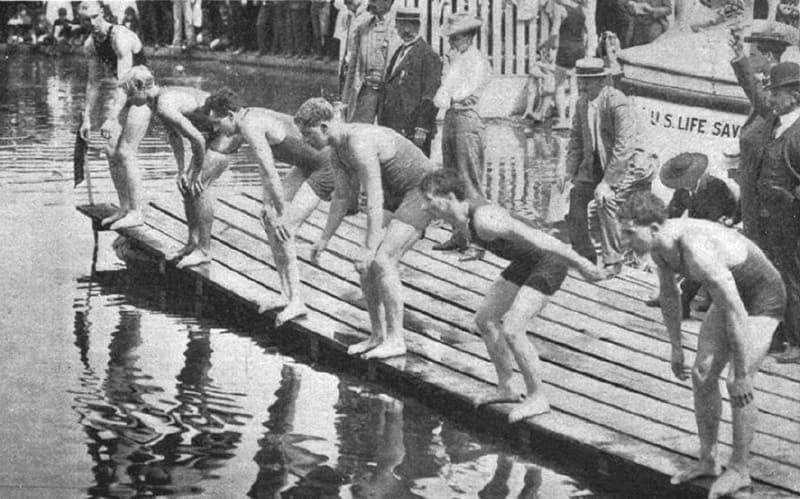
Dive right into the depths of history, and you’ll find that the origins of freestyle swimming are as fascinating as the stroke itself.
From the waters of ancient civilizations to modern swimming pools, the journey of freestyle swimming is filled with intriguing tales and noteworthy figures.
1. The Role of Ancient Civilizations
Did you know that swimming was not just a survival skill, but a recreational activity enjoyed by ancient civilizations? Various forms of swimming were depicted in the arts of early Egyptians, Assyrians, Hittites, and Minoans.
In fact, Egyptian tomb artwork dating back to around 2000 B.C. shows swimmers using a stroke that resembles today’s front crawl.
Even Assyrian stone carvings suggest the existence of an early form of the breaststroke. These depictions are a testament to the timelessness of the sport and its deep roots in human history.
2. The Emergence of Front Crawl
Fast forward to the 20th century, and we find an Australian swimmer named Richard Cavill making waves in the swimming world. Inspired by the swimming techniques of the natives of the Solomon Islands, Cavill developed the ‘Australian crawl’ in 1902.
This technique, a combination of an up-and-down kick with an alternating overarm stroke, made him the new world record holder for the 100 yards.
The Australian crawl would later evolve into the front crawl, which remains the fastest and most widely used stroke in freestyle swimming.
3. Notable Early Practitioners
In the annals of swimming history, few names shine as brightly as Captain Matthew Webb, Gertrude Ederle, and Marcus Hooper. Captain Webb, an English swimmer, made history in 1875 by becoming the first person to swim the English Channel, using the breaststroke.
Gertrude Ederle followed suit in 1926, becoming the first woman to conquer the English Channel. As for young Marcus Hooper, he swam into the record books in 1979 by becoming the youngest person to complete the channel swim at the ripe old age of 12.
Let’s also not forget Ashby Harper who, just a few days shy of his 66th birthday in 1983, became the oldest person to complete the swim. Swimming indeed knows no age!
The Cavill family of Sydney, Australia, particularly Richmond Cavill, played a pivotal role in popularizing freestyle swimming.
The Cavills improved the Trudgen stroke, which was the basis for the Australian crawl, and spread it to England, New Zealand, and America, thereby establishing the foundation for the freestyle stroke used worldwide today.
Evolution of Freestyle Swimming Techniques
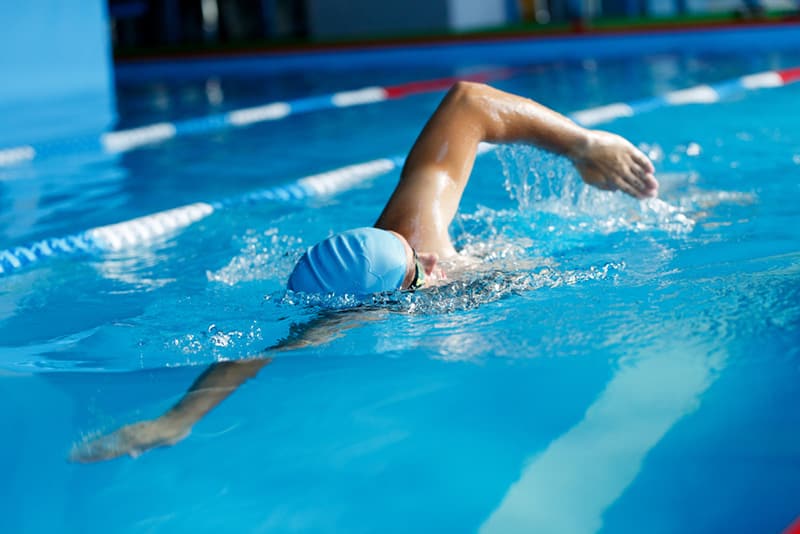
The freestyle swimming we see today is the result of many years of evolution and refinement.
As we dive deeper, we’ll explore the transformation of front crawl, the introduction of the six-kick cycle, and the development of underwater swimming and flip turns. Let’s jump in!
1. The Transformation of Front Crawl
The front crawl, known for its speed and efficiency, is the stroke of choice for most swimmers. It has its roots in the Trudgen stroke, which was improved and popularized by the Cavill family in Australia.
The stroke made its first splash in competitive swimming in 1844, as reported by The Times newspaper. Two native Americans, Flying Gull and Tobacco, swam in a race in London using a unique stroke that involved a vigorous arm movement and a downward foot motion.
This marked the beginning of the transformation of the front crawl, which differed significantly from the breaststroke, the then-dominant stroke in early European swimming clubs.
John Arthur Trudgen, a British swimmer, learned this technique in the 1870s and popularized it through his own variant, the Trudgen stroke.
However, it was the “American crawl,” a modified form of front crawl developed by American swimmer Charles Daniels, that ultimately laid the foundation for the stroke as we know it today.
During the Olympic Games, the front crawl has become the predominant stroke for freestyle events.
2. Introduction of the Six-kick Cycle
The front crawl continued to evolve with the introduction of the six-beat kick cycle. This technique, which involves six kicks for every arm stroke, provides increased propulsion and speed.
The first four Olympic Games predominantly saw the use of the Trudgen stroke, a combination of the front crawl arm technique and the breaststroke leg kick.
However, the Stockholm Olympics in 1912 marked a significant shift towards a closer variant of the modern-day front crawl in freestyle races.
American swimmer Duke Kahanamoku used the six-kick cycle to win the 100m freestyle gold, popularizing this technique.
It’s interesting to note that not all swimmers adhere strictly to the six-kick cycle. Some, like Franziska van Almsick, have found success with a four-kick per cycle technique.
3. Development of Underwater Swimming and Flip Turns
The 1950s saw the development of the flip turn, a technique used to reverse directions quickly, leading to faster times.
Underwater swimming and flip turns became integral parts of freestyle swimming, helping swimmers maintain momentum and reduce drag during races. The design of lanes in the early 1970s reduced water turbulence, further aiding swimmers’ performance.
The technique involves swimming close to the wall, initiating a somersault with straight knees, and pushing off the wall to continue swimming. This development has added a new layer of complexity and strategic depth to the sport.
Impact on Competitive Swimming
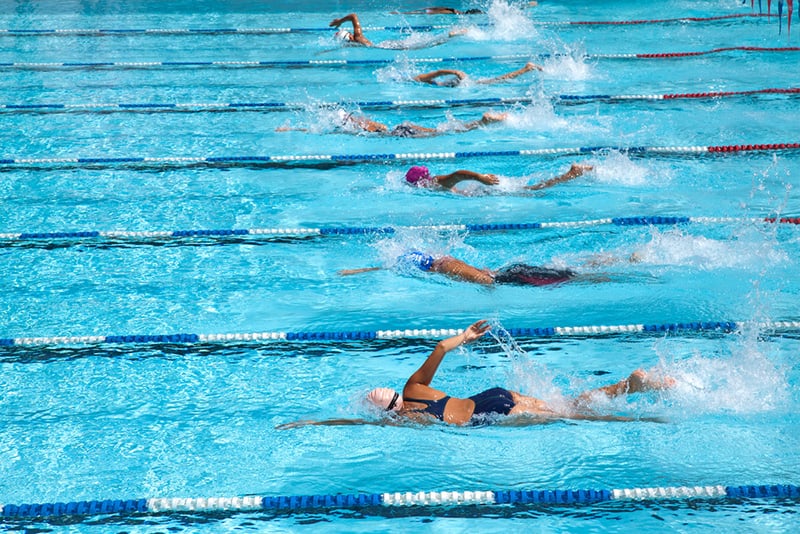
Freestyle swimming, with its speed and efficiency, has left an indelible mark on the world of competitive swimming.
In this section, we’ll look at the dominance of freestyle in swimming competitions, the first sub-1 minute 100m freestyle, and notable freestyle swimmers and their achievements.
1. Freestyle’s Dominance in Swimming Competitions
The front crawl stroke, also known as freestyle, is the most commonly used stroke in freestyle swimming competitions.
Unlike the backstroke, butterfly stroke, and breaststroke, the front crawl stroke is not regulated by FINA, giving swimmers the freedom to experiment and refine their techniques.
Freestyle races encompass a wide range of distances, from a quick 50 meters sprint to a grueling 1,500 meters marathon swim, and even a 10km open water race.
With its versatility and speed, freestyle has established its dominance in swimming competitions.
2. First Sub-1 Minute 100m Freestyle
Let’s travel back in time to the 1904 Olympics, where the first 100-yard freestyle race was introduced. This was later standardized to 100 meters.
It wasn’t until 1922 that the legendary Johnny Weissmuller shattered the one-minute barrier in the 100m freestyle (long course), clocking in at a breathtaking 58.6 seconds.
This feat was a game-changer, setting a new standard for speed in freestyle swimming.
3. Notable Freestyle Swimmers and Their Achievements
The world of freestyle swimming is filled with phenomenal athletes who have pushed the boundaries of the sport. Michael Phelps, known as the world’s greatest swimmer, has won numerous Olympic medals and set multiple world records.
Pieter van den Hoogenband was the first to break the 48.00-second barrier in the men’s 100m freestyle at the 2000 Olympic Games in Sydney.
Janet Evans, a long-distance swimmer, held several world records and won four Olympic gold medals and one silver medal.
Ryan Lochte, holder of world records in the 100-meter, 200-meter, and 400-meter individual medleys, has been a formidable force in the sport.
Let’s not forget Ian Thorpe, an Australian swimmer with multiple Olympic medals and world records in various freestyle events.
Katie Ledecky, a record-breaking Olympic swimmer, has triumphed in the 200m, 400m, and 800m freestyle races.
Duke Kahanamoku dominated the 100-meter freestyle at the Olympics in 1912 and 1920.
Dawn Fraser, another Australian swimmer, won gold in the 100-meter freestyle in 1956, 1960, and 1964.
Johnny Weissmuller, who had a 10-year undefeated career, won 5 Olympic medals and 36 national championships, leaving a lasting legacy in the world of freestyle swimming.
Tracy Caulkins set world records in the 200-meter butterfly and the 400-meter individual medley. Incredibly, she is the only swimmer ever to hold all of the U.S. records at the same time.
Mark Spitz won seven gold medals in the 1972 Olympics in Munich, more than any other swimmer in the history of Olympic competition.
These athletes, with their remarkable achievements, have shaped the course of freestyle swimming in competitions worldwide.
Training for Freestyle Swimming: Then and Now
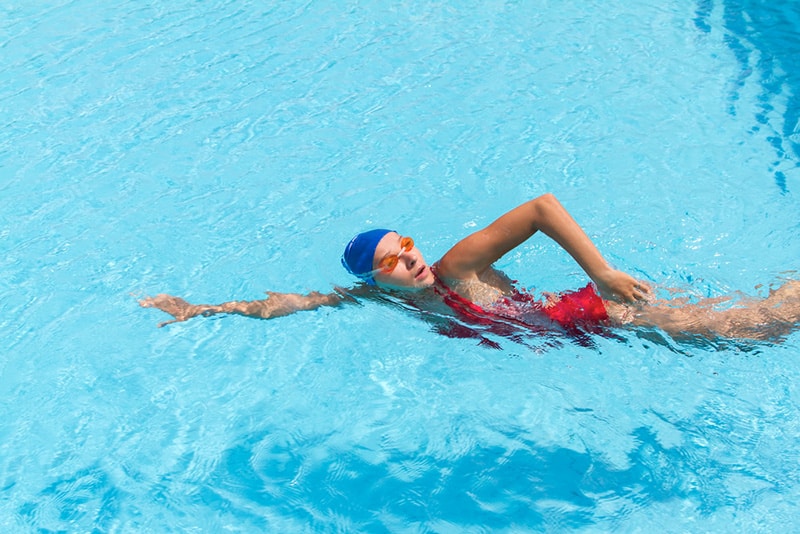
Let’s dive into the realm of training for freestyle swimming, a journey from its humble beginnings to today’s scientifically guided methods.
1. Early Training Methods
Back in the day, freestyle swimming was more of a freewheeling sport, with every swimmer having a unique style. It was all about using the body’s natural abilities and instincts.
Swimmers varied their stroke rates, kick frequency, breathing patterns, and body rotation depending on their individual physical strengths.
The Trudgen stroke was the preferred choice, with its head-high style and scissor kicks, until the Stockholm Olympics in 1912.
That was when the legendary Duke Kahanamoku swam into history with his six-kick cycle, winning the 100m freestyle gold and changing freestyle swimming forever.
2. Aerobic and Anaerobic Training
Fast forward a few years, and the focus began to shift towards aerobic training. Why, you ask? Because freestyle swimming is an aerobic stroke, which means it can draw energy from both the aerobic and anaerobic systems.
This flexibility enables swimmers to choose different speeds and intensities during training, offering a dynamic and diverse workout.
The aerobic system, which operates in the presence of oxygen, is your body’s go-to energy source for long, steady swims.
On the other hand, the anaerobic system, which functions without oxygen, kicks in for those short, high-intensity sprints, producing lactate as a byproduct—ever heard of ‘hitting the wall’ at the end of races? That’s lactate doing its thing!
The beauty of freestyle swimming lies in the way it allows swimmers to switch between these two systems depending on the set or race distance.
This flexibility facilitates different training ‘zones’, such as the threshold zone or the fat-burning zone, based on heart rate. Pretty neat, right?
And let’s not forget the benefits of aerobic exercise and water workouts! From reduced stress on tendons and joints to a lower risk of injuries, swimming offers a safe and effective way to stay fit.
In fact, the importance of these exercises was recognized back in 1961 when the Red Cross introduced the Swim and Stay Fit program to encourage fitness through swimming.
From then on, the 1960s ushered in a new era for water sports, with research on conditioning and aerobics revolutionizing training methods and focusing on cardiovascular conditioning.
3. Modern Training Techniques and Equipment
Now, let’s fast-forward to today’s world of freestyle swimming. The stroke has evolved tremendously, with innovations like the six-beat kick and straight-arm recovery.
Modern training techniques are all about improving stroke efficiency, power, and endurance. Have you heard of the Soviet swimmer Vladimir Salnikov? His adaptation of front crawl techniques for distance swimming has led to some truly jaw-dropping performances.
Today, swimmers dedicate thousands of hours to perfecting their craft, using the latest techniques and equipment.
Researchers have been studying stroke mechanics and hydrodynamics to understand the forces acting on a body moving through water. They’ve even been filming swimmers underwater since 1928!
This technique was used to great effect by Japanese researchers to train a dominant swim team for the 1932 Olympic Games.
And let’s not forget the contributions of notable swim researchers like C. H. McCloy, Robert Kiphuth, James Counsilman, Charles Silvia, and Ernest Maglischo.
FAQs
Let’s wade into some frequently asked questions about the history of freestyle swimming. Knowing the answers to these questions can make your swimming conversations even more engaging.
Why is Freestyle Swimming Often Called Front Crawl?
That’s a great question! You see, ‘Freestyle’ means you’re free to choose any stroke in swimming competitions.
However, the front crawl is typically chosen because it’s the fastest stroke. Over time, ‘freestyle’ has become synonymous with the ‘front crawl.’
The name ‘front crawl’ came from the crawling-like style of the stroke, with alternating arm movements in the water.
Who are Some Notable Figures in the History of Freestyle Swimming?
There are so many! We’ve got Johnny Weissmuller, the first person to swim 100m freestyle in less than a minute. Then there’s Duke Kahanamoku, who popularized the six-kick cycle.
Not forgetting the legendary Michael Phelps, who won a record-breaking 23 Olympic gold medals. And let’s not forget about Katie Ledecky, a current swimming sensation known for her dominance in freestyle events.
How Has Freestyle Swimming Changed Over the Years?
Oh, it’s changed a lot! Early swimmers used various techniques depending on their physical abilities.
But over time, innovations like the six-beat kick, underwater swimming, and flip turns have transformed the sport.
Modern training techniques focus on improving stroke efficiency, power, and endurance.
Why is Freestyle Swimming the Most Common Stroke Trained?
Well, the front crawl (most commonly used in freestyle swimming) is the fastest and most efficient of all swimming strokes.
It’s also a versatile stroke that exercises almost all major muscle groups and is therefore a great choice for fitness and competitive swimming alike.
The Bottom Line
From ancient times to the modern day, the history of freestyle swimming is a fascinating tale of evolution and innovation. As we’ve seen, the transformation from the early front crawl to the current techniques has brought about remarkable feats in competitive swimming.
But the story doesn’t end here. As we dive into the future, who knows what exciting developments lie ahead? So, keep swimming and stay tuned for the next chapter in the history of freestyle swimming.
Have thoughts or memories to share about freestyle swimming? Dive into the comments below – I’d love to hear from you! And don’t forget, if you found this article informative, please feel free to share it with your fellow swimming enthusiasts!
References:
- https://en.wikipedia.org/wiki/Freestyle_swimming
- https://en.wikipedia.org/wiki/Front_crawl
- https://www.swimming.org/sport/history-of-front-crawl/
- https://www.washingtonpost.com/wp-srv/sports/olympics/longterm/swimming/swimstrk.htm
- https://www.sport-fitness-advisor.com/famous-swimmers.html
- https://swimswam.com/where-has-the-lcm-mens-100-free-gone-100-years-after-the-first-sub-100-swim/

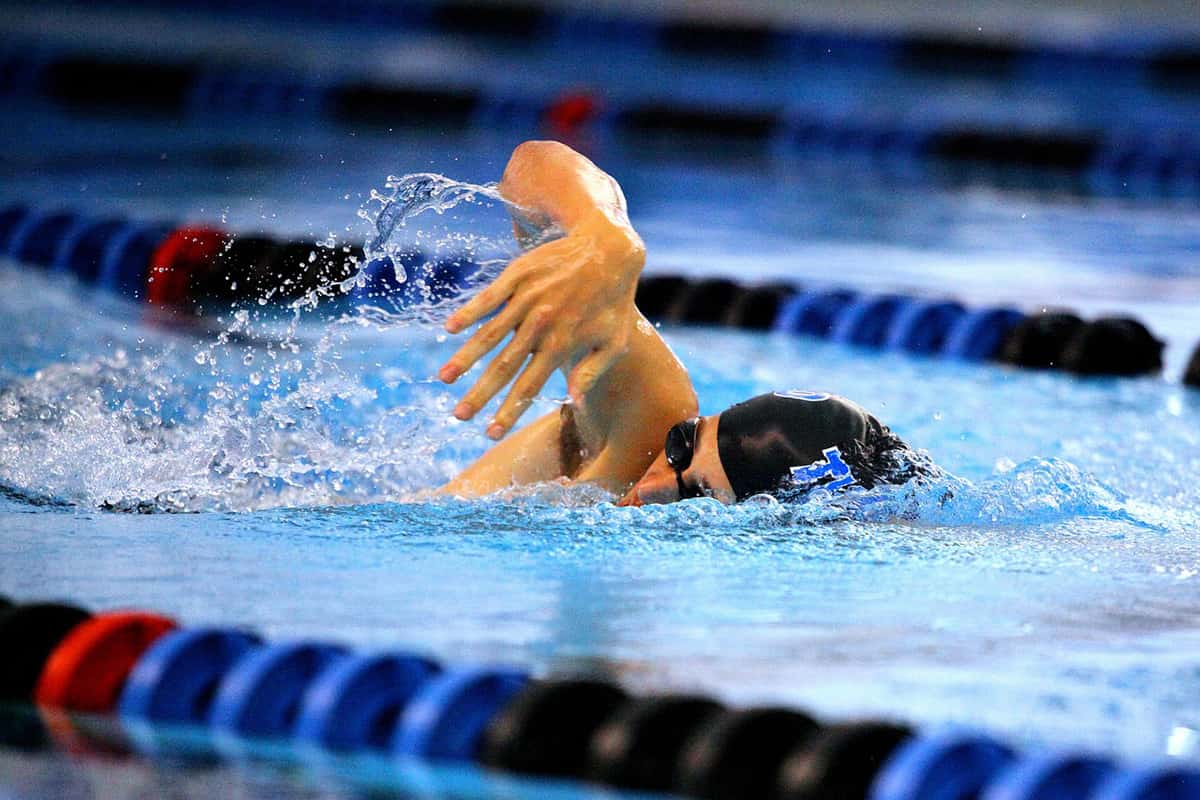
Leave a Reply